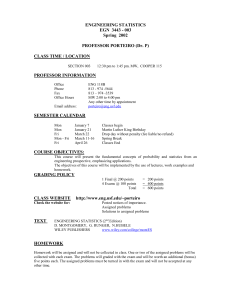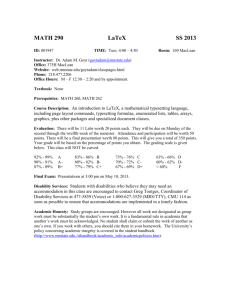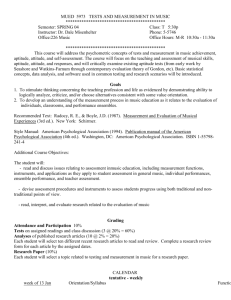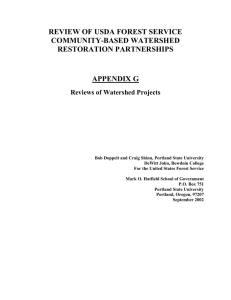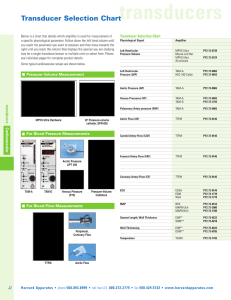Tree Physiology - Department of Plant Sciences
advertisement
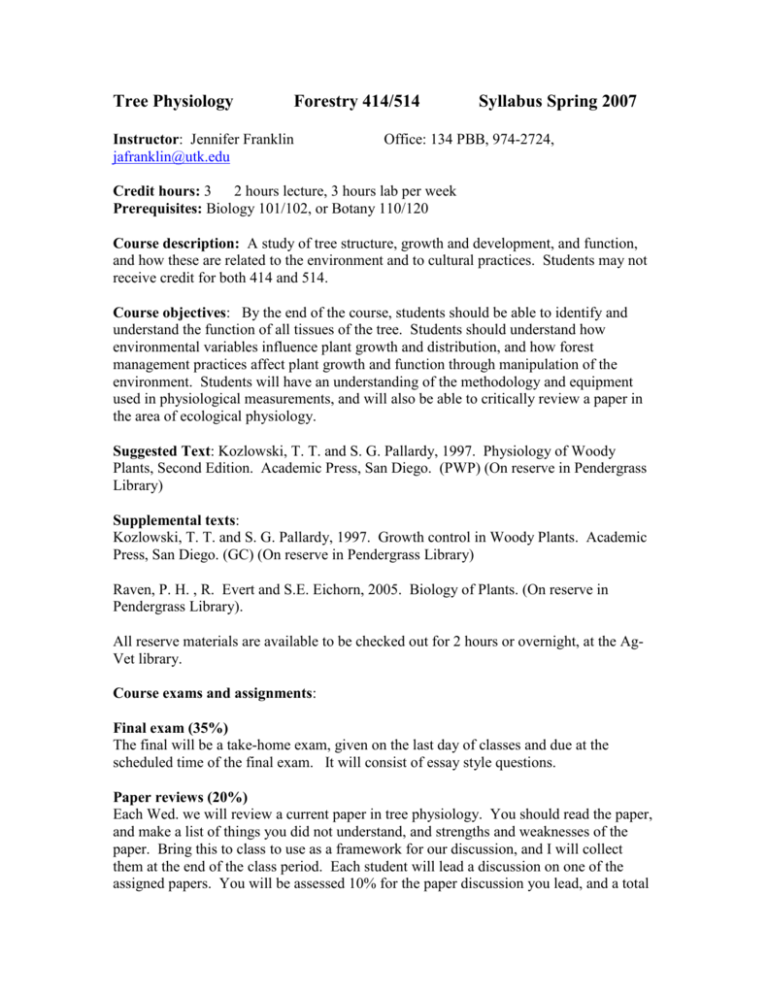
Tree Physiology Forestry 414/514 Instructor: Jennifer Franklin jafranklin@utk.edu Syllabus Spring 2007 Office: 134 PBB, 974-2724, Credit hours: 3 2 hours lecture, 3 hours lab per week Prerequisites: Biology 101/102, or Botany 110/120 Course description: A study of tree structure, growth and development, and function, and how these are related to the environment and to cultural practices. Students may not receive credit for both 414 and 514. Course objectives: By the end of the course, students should be able to identify and understand the function of all tissues of the tree. Students should understand how environmental variables influence plant growth and distribution, and how forest management practices affect plant growth and function through manipulation of the environment. Students will have an understanding of the methodology and equipment used in physiological measurements, and will also be able to critically review a paper in the area of ecological physiology. Suggested Text: Kozlowski, T. T. and S. G. Pallardy, 1997. Physiology of Woody Plants, Second Edition. Academic Press, San Diego. (PWP) (On reserve in Pendergrass Library) Supplemental texts: Kozlowski, T. T. and S. G. Pallardy, 1997. Growth control in Woody Plants. Academic Press, San Diego. (GC) (On reserve in Pendergrass Library) Raven, P. H. , R. Evert and S.E. Eichorn, 2005. Biology of Plants. (On reserve in Pendergrass Library). All reserve materials are available to be checked out for 2 hours or overnight, at the AgVet library. Course exams and assignments: Final exam (35%) The final will be a take-home exam, given on the last day of classes and due at the scheduled time of the final exam. It will consist of essay style questions. Paper reviews (20%) Each Wed. we will review a current paper in tree physiology. You should read the paper, and make a list of things you did not understand, and strengths and weaknesses of the paper. Bring this to class to use as a framework for our discussion, and I will collect them at the end of the class period. Each student will lead a discussion on one of the assigned papers. You will be assessed 10% for the paper discussion you lead, and a total of 10% for weekly reviews and participation in discussions led by others. Discussion leaders should begin with a summary of the paper, defining any unfamiliar terminology and techniques, and pointing out the important results. Questions may address the theory, methodology used, experimental design or statistics, how results are presented or what they mean. I will lead the first few discussions. Anatomy (15%) In order to understand how the tree functions, you must know all of the tissues of the tree and what each does. You will work on this primarily on your own, but questions in class are always welcome. The module is available online at http://trees.tennessee.edu A self-test is available for practice on the class blackboard site. You may use it as many times as you like, it does not record a grade. You will have an exam covering this material in lab on Apr. 11. Lab assignment (30%) You will perform your own experiment from start to finish. This portion of the grade is based on your formal report, due on Apr. 25. More instructions to come. Class Schedule Week Topic (Mon.) Jan. 10 Introduction Jan. 15 - 17 Holiday – no class Jan 22 – 24 Jan 29 - 31 Feb. 6 – 8 Seed dormancy Shoot dormancy Light Feb. 12 – 14 Feb. 19 – 21 Feb 26– 28 Mar. 5 – 7 Mar. 12 – 15 Mar. 19 – 21 No class Carbon use Water relations Mineral nutrition Spring break Soil properties Mar. 26 – 28 Apr. 2 – 4 Hormones Sensing the environment Reproductive growth Biotechnology Apr. 9 – 11 Apr. 16 – 18 Paper (Wed.) None Reference Lab Lecture: growth, anatomy Franklin No class Ch 2 – 4 PWP Biology of Plants Ch 2 GC Intro to course module / microscopy Ch 5 PWP IRGA, LA meter, Spectrophotometer Ch 6-7 PWP Ch 11-12 PWP Ch 10 PWP start investigative lab Ch 10 PWP Tensiometer, EC, penetrometer, Porometer, soil resp. No class Franklin Tetrazolium testing No class Franklin Ch 13 PWP Ch 13 PWP Ch 5 GC Ch 5 PWP Ch 6 and 8 GC Ch 9 GC Lab anatomy exam End investigative lab
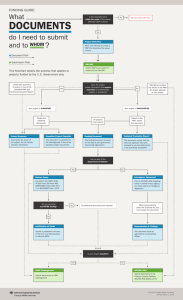



![AARMS Summer School Lecture I: The study of the profile... [1] Appendix of Wei-Winter’s book on ”Mathematical Aspects of Pattern...](http://s2.studylib.net/store/data/011139684_1-b31ff912d117e7622ee4533cf1d9d627-300x300.png)

